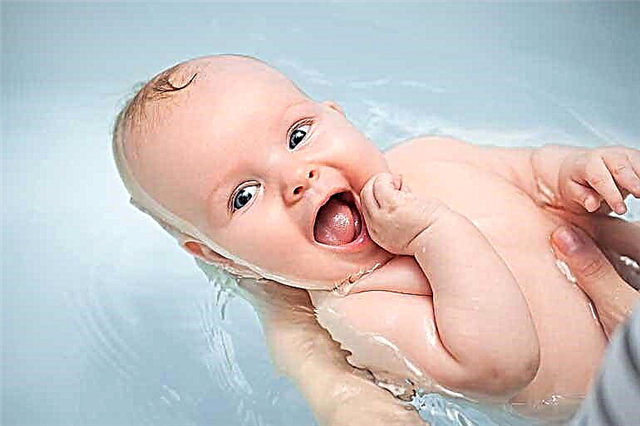Mucus in the urine of a healthy child is an abnormal phenomenon, but you should not worry. Often this is a natural defensive reaction to the ingress of microorganisms into the organs of the excretory system of the crumbs. What does mucus in urine mean in a child? Can she talk about the disease? In what situations do you need to be alarmed if the baby has mucus in the urine, and when to stop sounding the alarm?

Analysis of urine
Urine collection rules
Collecting urine is a whole technology. If you do not follow it, you can get the wrong result. It is important to follow these rules.:
- Urine collection is carried out in the morning. At the same time, during the last 6-8 hours, the baby should not go to the toilet on a small one.
- You should first wash the crumbs. Wipe the skin dry. Any drops of water can falsify the analysis result. Girls are washed from front to back - otherwise, microbes from the intestines will end up in the baby's urine.
- A medium sample is recommended.
- The urine is poured into a clean container. The parent can sterilize the container on their own or buy a ready-made jar at the pharmacy.
- The urine is stored in the refrigerator for a maximum of 3 hours. The jar must be sealed with a sterile lid.

Mucus in urine
Important! It is strictly forbidden to collect the analysis in a pot. Parents, with all their desire, will not be able to clean it perfectly.
Possible causes of the problem
Mucus in the analysis of urine in a child is dead cells of internal organs. Since the tissues of the internal organs are regularly renewed, it may appear. In the presence of inflammation, this process is faster.
FROMlick can also appear in cases not related to the disease (then its amount is insignificant):
- Failure to comply with collection rules.
- Violation of requirements for storage of material for analysis.
- Lack of urination for more than 6-8 hours a period of time.
- Physiological stagnation of urine. This is a common occurrence in babies up to three years old, the reason is underdeveloped blood supply to the organs of the excretory system. This is an absolute norm, this condition will pass over time.

Baby crying
Have baby mucus in urine can designate the presence of some diseases:
- Urinary tract infections such as cystitis and urethritis.
- Malfunctions of the kidneys, as a result of which salt deposition occurs. In particular, this happens when an insufficient amount of liquid is consumed. Sometimes the appearance of mucus in urine can cause glomerulonephritis and pyelonephritis.
- Vulvovaginitis - pathology of the external genital organs in girls.
- Phimosa - narrowing of the foreskin in boys. Due to the inability to fully open the glans of the penis, it is difficult to flush out the mucus that remains in the urine.
If the doctor suspects something from this list, he may prescribe a comprehensive urine test. In this study, parents are required to collect 4 to 12 samples per day. Then the doctor analyzes the dynamics of the composition of urine at different times after waking up, depending on the activity of the baby and his diet.
Inflammatory processes of the urinary system
The inflammatory process is a specific immune response to the ingress of a certain pathogen.
The most common causes of mucus in the urine of a child can be the following pathologies:
- Pyelonephritis is a bacterial infection of the kidneys. If left untreated, the disease can be fatal. It occurs due to the fact that the bacteria in the bladder rises up the ureters. Also, pathogens can get there with lymph flow in other diseases (cholecystitis, tonsillitis, colitis). It may be accompanied by fever, urinary incontinence, sharp urge to urinate, pain in the abdomen and lower back, weakness. Urine itself has an unpleasant odor. Young children (up to one month old or older babies) may not have fever (or there is a slight rise in temperature), while appetite deteriorates, and frequent vomiting occurs.
- Vulvovaginitis - when the mucous membrane of the labia and vagina becomes inflamed. The most common cause of illness in newborns and young children is a lack of proper hygiene of the genitals. With this disease, mucus is often secreted, which then enters the urine. It can lead to a number of complications, including pyelonephritis.
- Balanoposthitis. This is the main consequence of phimosis in boys. It is accompanied by pain when urinating, redness of the glans penis. Also, pus is released, which enters the urine, causing an increase in the amount of mucus.
In fact, any inflammatory process in the body caused by bacteria can lead to such situations. Therefore, you need to regularly analyze the condition of the child and treat all pathologies in time.
Analysis and rate of mucus in children's urine
The assessment can be carried out by external signs. A healthy infant has a light yellow urine color, no cloudiness or lumps. The mucus has the form of "villi" with a diameter of up to 1 mm and a length of 2-4 mm. You can see them by directing the jar with the collected analysis to the sun.
Normal readings
If the result is “one” or “two” (or the corresponding number of pluses), there is no cause for concern. This suggests that there is no mucus at all, or its presence is not of a pathological nature. 3 or 4 should be alarming, as it may mean that there is a certain disease.
Excessive white blood cell count
If there is also a high white blood cell count, this indicates an inflammatory process. The rates differ depending on the age of the children. In general, babies should not have more than 1,308 per liter of blood.
If the result exceeds the normal value, then this is a sure sign of a disease, first of all, of the kidneys, bladder or genitals. In some cases, this condition is caused by allergic reactions.
Important! Normally, leukocytes in urine should not be contained.
Indicators
When analyzing urine, you should be guided by 20 criteria, among which the doctor looks at the following:
- Urine volume.
- Color, transparency.
- Smell.
- The amount of foam.
- Density.
- Acidity.
- Various biochemical indicators such as protein, bilirubin, glucose, acetone and others.
- Presence of blood corpuscles.
- Sediment content.
This information is primarily for the interpretation of the doctor. The task of the parent is to correctly carry out the procedure for collecting urine for analysis.
What to do with poor analysis
In this case, a second study is usually prescribed. If the result is normal, then most likely the cause was a violation of the collection and storage of urine. If there are concomitant symptoms, or there are suspicions of inflammatory processes in the baby's body, a bacterial urine culture is prescribed.
Usually, when asked whether to re-analyze, attention is paid to the state of health. If it is bad, then the presence of an inflammatory process is obvious. Then other examinations are used: X-ray or endoscopy.
Do I need treatment
If a bacterial infection is found, the doctor will prescribe antibiotics.

The baby is cured
Prevention of urinary system diseases in children
First of all, you need to follow the rules of hygiene of the genital organs, as well as carry out timely treatment of any diseases, even if they at first glance are not related to the urinary system. For example, sore throat and flu, the focus of which is located in a completely different place, can give serious complications. Why? Because everything in the body is interconnected.
Also, it is not necessary to salt the food of the crumbs, since there is an increased load on the kidneys, and they are worse at coping with their function.
Thus, the child may have mucus in the urine. This should not be feared, provided that the baby eats well, is healthy and cheerful.



